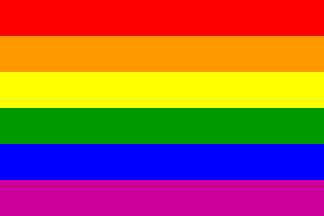
Original logo
So I've visited the Castro, a neighborhood in San Francisco, most famous for being well known as a gay village and it's working class background during the 60s and 70s, at a time when LGBT activism was on the rise post-Stonewall (June 28, 1969), which also pertains on the last week of June that SF Pride occurs.
Anyway, I retooled this logo with the help of Illustrator by copying the design of the logo in terms of shape, text, size, and used similar schematics of the original logo to create what I have above.
I replaced the primary word in the logo, which was "DIESEL" to "ANOREXIA", which I did as a response to the advertising of the clothing to only associate the fashion and clothing style towards people who are likely to be skinny or slender. The bias towards this is that I only mention anorexic people, assuming whether or not they might be healthy or not, regardless if they're ectomorph (characterized by long and thin muscles/limbs and low fat storage; usually referred to as slim) in terms of the people who wear the clothing or people who associate themselves with it.
On the bottom, I replaced the phrase "FOR SUCCESSFUL LIVING" to "DIE BEAUTIFUL INSTEAD OF AIDS". Now this is only intentional to a certain location and audience, I want to jam this logo somewhere in the Castro, where they currently have a Diesel clothing store, which apparently held a radio broadcasting show called Hibernia Beach LIVE, which was a gay-themed call-in show from October 1989 to 2000, which was named "the longest running gay-themed show on commercial radio".
I love to read up on reviews of store that are of interest in what I have currently researched in creating this logo. According to reviews on Yelp, the general sense of the Diesel store in the Castro is mixed, faired with some reviews, according to one review saying the store had:
"...so many snobby employees!!!! I don't know what their problem is, but I don't think there in any position to treat people like crap, when they are making minimum wage. These bitches need to check the attitude at the door. Also, their clothes are too expensive, can easily find the equivalent somewhere else and cheaper."
Other reviews rate the store in a positive sense, such as having a variety selection of clothing, good-looking employees (most or almost all of them are apparently males), and durability of branded clothing, at a steep price to pay.
As for retooling the logo to say "DIE BEAUTIFUL INSTEAD OF AIDS" on the bottom is mostly to give the message that anorexia seems to be more culturally accepted to keep up appearances in the gay male community if you want to be identified in terms of being attractive and looking for sexual partners as a means of creating a physical appearance that is apparently borderline accepted.










